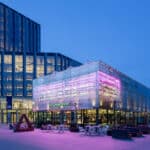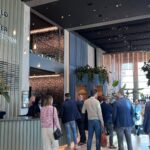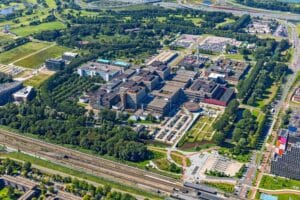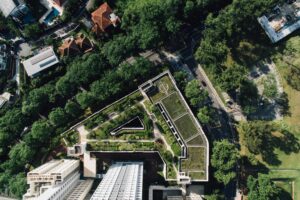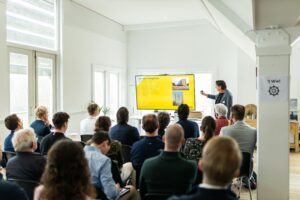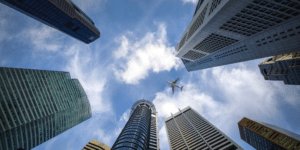
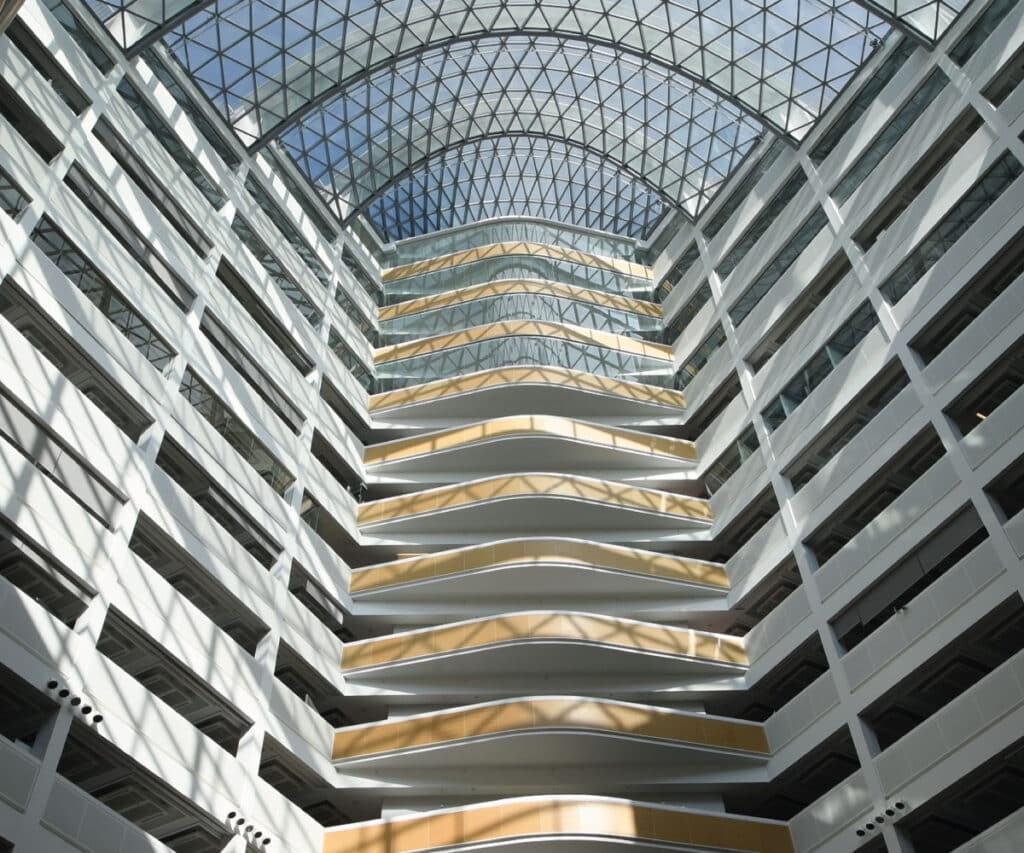
Buildings & biodiversity: Europe’s top 10
Although biodiversity seems one of the most fuzzy concepts in the environmental world, it might be the most crucial one. A diverse ecosystem is more resistant to shocks, because biodiversity creates resilience in extreme circumstances. Biodiversity is therefore linked to climate change, in being able to protect nature against extreme situations. Reversely, decreased biodiversity eliminates earth’s capacity to withstand extremes, consequently accelerating climate change. In this article you’ll read how you can foster biodiversity in the built environment and we bring you up to speed on legislative proposals and changes.
The fundament of an environmentally healthy earth
From clean drinking water to food security: biodiversity is at the root. Rich biodiversity is connected to fertile soil to grow food that is resistant to diseases. Another example: not only the Amazon, but also the seas are vital for oxygen on earth. Half of all oxygen worldwide is produced by the oceans. Pollution exhausts life in seas, threatening oceans’ capabilities to capture CO2 and create oxygen, for which we among others rely on whales and phytoplankton. In short, it can be stated that biodiversity is the fundament of sustainability.
Europe’s top 10 buildings regarding biodiversity
How can the built environment contribute to protecting biodiversity? Get inspired by this list of ten buildings enhancing biodiversity.
#1 Cambridge Central Mosque
The first mosque build in Cambridge was the first eco-friendly mosque of Europe at the same time. It facilitates a green roof with a large variety of greenery, among which 20 cypresses. Besides beautiful, the garden is able to absorb extreme rainfalls, preventing floods in the city. Moreover, the rainwater is captured and filtered to irrigate the greenery.

#2 Smart and striking: the Cube office, Berlin
The German office building Cube is an eye-catcher, with its double skin façade of glass. The building’s architecture allows steady temperatures without the use of heavy air conditioning systems. Natural ventilation and smart systems transferring heat surplus to other parts of the building enable a low energy use. Next to a roof garden, vertical gardens on the façade create a living space for insects and birds.
#3 The Edge, Amsterdam
An award-winning ‘most sustainable office building in the world’ could not be left out of this top 10. The Amsterdam based office ‘The Edge’ received the highest BREEAM certification possible, and is marked by its high energy-efficiency. Rain water is collected to irrigate plants and for other non-potable usage throughout the spacious building.
#4 Biodiversity bomb in Bloomberg, London
Characterised by its revolutionary gills on the façade, the Bloomberg office in London is smartly kept cool. Since they’re also letting through a lot of daylight, inside greenery is rapidly growing and ensuring excellent air quality. The building was designed to maximize energy-efficiency and achieves that by among others a smart power system reducing energy demand and usage. Rainwater is again collected, at Bloomberg also to flush toilets and hereby reduce the pressure on municipal fresh drinking water, resulting in 73% less water usage than similar buildings.
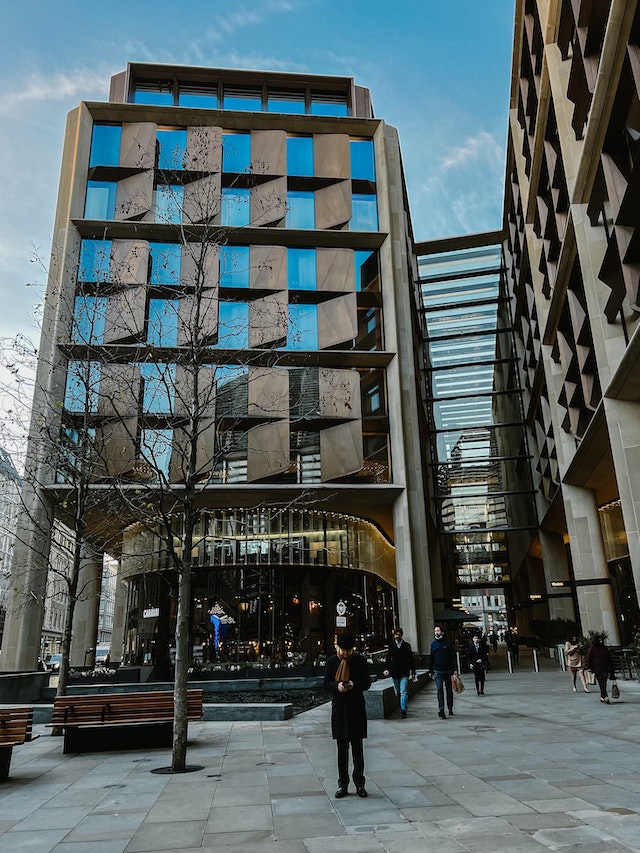
#5 One Angel Square, Manchester
Similar to the Cube office building, One Angel Square is provided with a double skin glass façade. The building consists of several features for smart water management, both inside and outside the building. Besides collecting rainwater to reuse for irrigation, permeable paving is used to facilitate gradual water drainage and prevent floods. Not seen in the first four of the list: One Angel Square is equipped with a heat recovery system to reuse heat generated at IT systems in other building compartments.

#6 The Crystal, London
This event hall is provided with sustainable energy from renewable sources. Its high energy-efficiency is emphasized by the BREEAM outstanding and Platinum LEED certificates. The green roof and generous garden around the building provide fresh air, insulation of the building and also an attractive area for animals. In addition to the building features reducing environmental pressure on a day-to-day basis, The Crystal also strives to educate visitors by hosting a permanent exhibition regarding eco-friendly urban development.
#7 NewLogic III, Tilburg
Rather than a double skin, the distribution centre of Dutch logistics company Rhenus is provided with triple glazing. Together with an airtight design, the internal temperature can be kept at constant levels with hardly using heating or cooling systems. At the roof, rainwater is absorbed and collected for use in bathrooms, where water-free urinals are installed.

#8 One Floreasca City, Bucharest
Combining residential and office, the three towers of One Floreasca City in Romania’s capital offer an oasis of greenery. One third of the area is covered with native plant species accustomed to the Bucharest climate and therefore requiring relatively less water. Being built on the site of a former factory of cars, the buildings provide the city with an environmentally friendly upgrade. The low VOC-paint used at One Floreasca City reduces hazardous chemicals polluting the air and water systems.
#9 Bosco Verticale, Milan
It’s all in the name. These two towers provide housing not only for Italians, but also for thousands of trees and shrubs, creating a vertical forest. The urban ecosystem subsequently offers a heavenly place for insects and birds. How 20,000 m2 vertical forestry looks like? See for yourself in the image below.

#10 The Tower of Cedars, Lausanne
Designed by the same green architect, named Stefano Boeri, is the Tower of Cedars. The building is currently under construction in the Swiss Lausanne and will form a 117-meter-high green façade where mostly birds will find a pleasant home. Cedar trees are chosen because of their durability and resilience to varying weather conditions. The idea is that the inhabitants of 195 apartments build a renewed relationship with nature.
Society and system shifts to boost biodiversity
With awareness regarding the great importance of biodiversity rapidly growing, social pressure, political discussions, scientific research and initiatives further promoting biodiversity arise. For example, The World Economic Forum for launched its BiodiverCities 2030 vision, drawing attention to the decreased nature in the built environment and providing paths to increase biodiversity herein. The European Union developed a Biodiversity Strategy for 2030 aiming to guarantee protection of diverse nature, reversing degradation and recovering rivers, life of pollinators and forests.

Legislation
The legal field is also moving and slowing starting to change. After years of negotiations, the VN agreed on protection of the vital, diverse nature of our world. One third of nature should be protected by 2030, a ratio that has now also been agreed upon for the seas. Since the open seas – beyond territorial borders – are no man’s land, international arrangements on management and protection of them were necessary. The agreement reached at the Montréal conference is seen as ambitious and special. It may even lead to a breakthrough, as the resulting (inter)national laws will facilitate financial resources to invest in recovery and increase of biodiversity worldwide.
Next to legal requirements and institutional strategies, environmental effects of biodiversity loss are also affecting companies. Lack of anticipation increases companies’ vulnerability for weather changes for example, let alone the risks of not participating in economic transitions.
Multinationals and financial companies will become obliged to measure and report their impact on local biodiversity. Moreover, certificates like BREEAM already include biodiversity aspects in their assessments. Are you all set for a sustainable future of the built environment? We are here to help: reach out to us.

